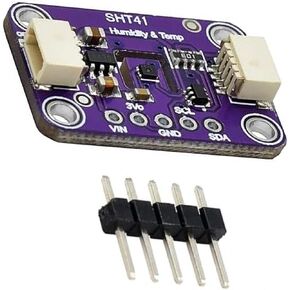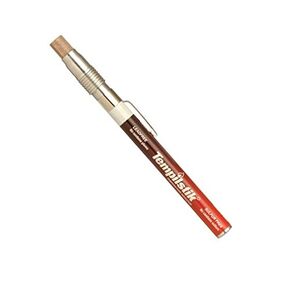- Shopping, made easy.
- /
- Get the app!
Features:
Outgoing line:
Power pin
The sensors on the breakout require a voltage between 2.7V and 5.5V, and can be easily used with most microcontrollers, from Arduino to Feather or something else.
Vcc - This is the power pin. To power the circuit board, provide it with a power supply that is the same as the logic level of the microcontroller - for example, for a 5V micro like Arduino, use 5V
GND - Common ground for power and logic
I2C logic pin
SCL - This is the I2C clock pin connected to the I2C clock line of the microcontroller.
SDA - This is the I2C data pin connected to the I2C data cable of the microcontroller
STEMA QT - These connectors allow you to connect to the development board using STEMA QT connectors or to connect to other things using various related accessories
Other pins
INT - This is the interrupt pin. You can set PCT2075 to activate this pin when the temperature threshold is reached or exceeded.
A0, A1, A2- I2C address pins. Please refer to the "I2C Address Selection" section below
I2C address selection
One improvement of PCT2075 compared to its replaceable LM75 is its ability to have three times the number of I2C addresses. Interestingly, they achieve this by allowing three address pins A0, A1, and A2 to be in one of three states, low (0), high (1), or floating (F). This means there are 33 (27) possible addresses. Connect the address pin to the low level, connect the logical level of the device to the high level, or suspend the pin.
The PCT2075 temperature sensor is a 'code compatible' embedded alternative to the very common 12C temperature sensor LM75. However, compared to the LM75, the 11-bit ADC in the PCT207 five provides better measurements than the LM75's 9-bit ADC.
Package included:
2Pcs PCT2075 Temperature Sensor 11 Bit Higher Accuracy ADC Measurement I2C Temperature Sensor Compatible to QT/Qwiic with Pins
 10pcs PT100 Waterproof Sensor Probe for Temperature Controller Health Gear Temp, Probe, PT 100 Temp Temperature Sensors Thermistor
KWD 5
10pcs PT100 Waterproof Sensor Probe for Temperature Controller Health Gear Temp, Probe, PT 100 Temp Temperature Sensors Thermistor
KWD 5
 1 pcs SHT41 T/H Sensor for QWIIC Interface Temperature and Humidity Sensor Module SHT41 Temperature Humidity Sensor Module IIC I2C 3.3V-5V Compatible with Stemma QT Qwiic
KWD 4.500
1 pcs SHT41 T/H Sensor for QWIIC Interface Temperature and Humidity Sensor Module SHT41 Temperature Humidity Sensor Module IIC I2C 3.3V-5V Compatible with Stemma QT Qwiic
KWD 4.500
 JB Weld 8297 -DEU HighHeat Heat-Resistant Epoxy Metal Putty for All High Temperature Work
KWD 8
JB Weld 8297 -DEU HighHeat Heat-Resistant Epoxy Metal Putty for All High Temperature Work
KWD 8
 Tempilstik 28011 Surface Temperature Indicator, One Indicator, 188 Degree F
KWD 6
Tempilstik 28011 Surface Temperature Indicator, One Indicator, 188 Degree F
KWD 6